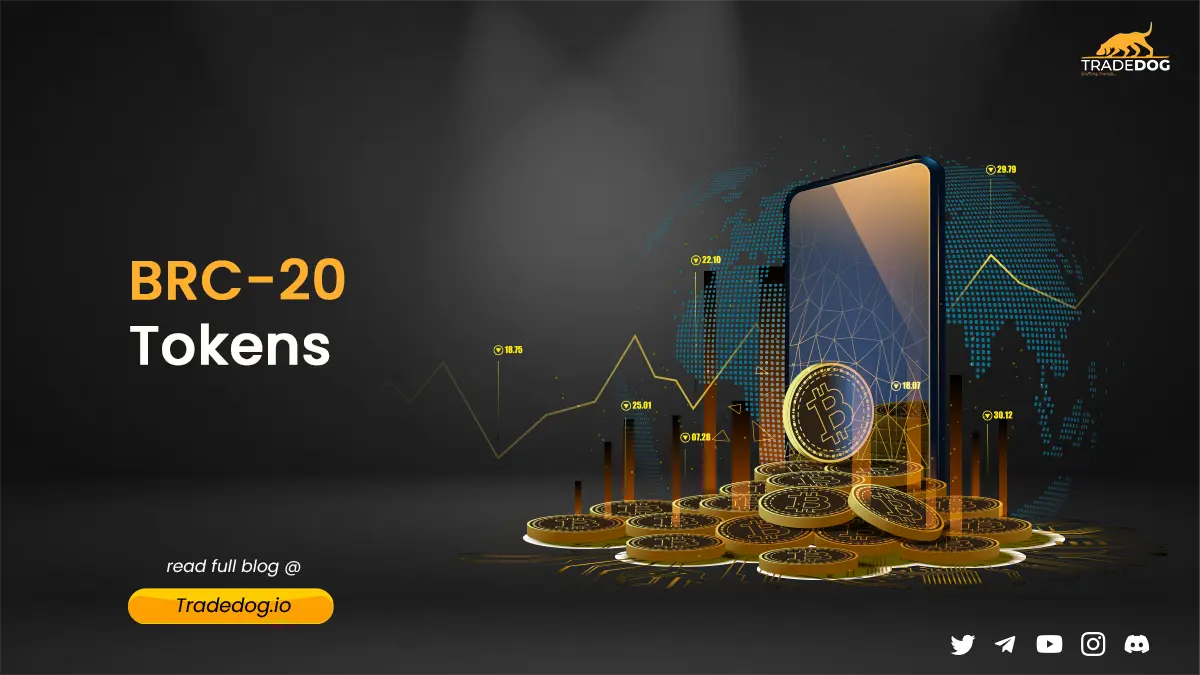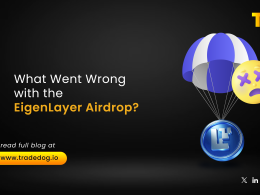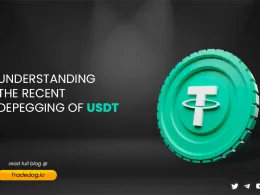Quick Links
Bitcoin, the first and most popular cryptocurrency, is known for its volatile nature, often experiencing sharp fluctuations in price within a short period. To give you an idea, the graph below indicates the price movement of bitcoin from 2013 which clearly shows the volatile nature of the cryptocurrency.
The data provided indicates the volatility of bitcoin in the past few days. This volatility has resulted in the development of various financial instruments, including Bitcoin volatility futures. In this blog, we will discuss the relationship between Bitcoin price volatility and investment opportunities, analyze the potential risks and rewards of investing in Bitcoin volatility futures, and provide final thoughts on the potential impact of Bitcoin volatility futures on the crypto market.
How do Bitcoin Volatility Futures Work?
Bitcoin volatility futures are financial instruments that allow investors to speculate on the volatility of Bitcoin. They are futures contracts that allow traders to bet on the future volatility of the Bitcoin price. The contracts are based on the expected volatility of Bitcoin over a specific period, usually, 30 days, and are settled in cash.
To illustrate how Bitcoin volatility futures work, let’s consider an example. Suppose an investor purchases a Bitcoin volatility futures contract at a price of $10,000 with a 30-day expiration. If at the expiration of the contract, the expected volatility of Bitcoin is higher than the contract’s price, the investor makes a profit. However, if the volatility is lower than the contract’s price, the investor makes a loss.
Comparison with Other Derivatives and Financial Instruments
Bitcoin volatility futures are similar to other derivatives such as options, swaps, and forwards. However, unlike options, which provide the buyer with the right but not the obligation to buy or sell an asset at a specific price, Bitcoin volatility futures are binding contracts. They are also different from swaps and forwards, which are agreements between two parties to exchange assets or cash flows at a future date.
Below is the data indicating the volume of bitcoin futures in several exchanges. As on Feb 2023, the total volume of Bitcoin volatility futures was more than $790 Bn.
Whereas, the volume of Bitcoin options on Feb 2023 was reported to be more than $20 Bn
Now coming to other financial instruments, there are several differences which can be listed, including –
Underlying Asset
Bitcoin volatility futures are a financial derivative product that is based on the volatility of Bitcoin, which is a digital asset. Other financial instruments, on the other hand, can be based on a variety of underlying assets such as stocks, bonds, currencies, commodities, and indices.
Market Liquidity
Bitcoin volatility futures have relatively low market liquidity compared to other financial instruments. This is because the market for Bitcoin and its derivatives is still relatively new, and there are fewer participants in the market. Other financial instruments, such as stocks and bonds, have a more established market with more participants and higher trading volumes.
Regulation
The regulation of Bitcoin and its derivatives is still evolving, and the regulatory framework is not yet fully established. As a result, Bitcoin volatility futures are subject to less stringent regulatory oversight compared to other financial instruments, such as stocks, bonds, and futures contracts on traditional exchanges. This lack of regulation may increase the risk of market manipulation and fraud.
Risk Profile
Bitcoin volatility futures are considered high-risk financial instruments due to the volatile nature of Bitcoin and the lack of regulation. The value of Bitcoin can fluctuate rapidly, and investors can suffer significant losses if they do not manage their positions carefully. Other financial instruments, such as stocks and bonds, are considered a lower risk due to their more established markets and regulatory frameworks.
Trading Hours
Bitcoin volatility futures can be traded 24/7 as Bitcoin is a decentralized digital currency that is not bound by traditional trading hours. Other financial instruments, such as stocks and bonds, are typically traded during regular market hours.
Contract Specifications
Bitcoin volatility futures typically have unique contract specifications compared to other financial instruments. For example, Bitcoin futures contracts may be settled in Bitcoin rather than cash, and they may have different margin requirements and expiration dates than other futures contracts.
Key Features, Benefits, and Risks of Bitcoin Volatility Futures
Bitcoin volatility futures have several key features, benefits, and risks that investors should be aware of before investing in them.
Settlement in cash
Bitcoin volatility futures are settled in cash, which means investors do not need to hold Bitcoin or any other cryptocurrency. The timeline of settlement looks like this –
Leverage
Bitcoin volatility futures allow investors to trade with leverage, which amplifies the potential returns but also increases the risks. Trading positions can be opened either long or short. So, you establish long bets on digital assets if you think their value will increase. For short positions, the situation is the opposite. It’s crucial to keep in mind that leverage trading uses ratios of 1:10, 1:50, 1:100, 1:500, and up to 1:1000. This means that if you wish to invest $1000 at a leverage of 1:10 in a digital asset, you can only create a position with $100. You have a 10x possible profit and 10x potential loss with a leveraged transaction like this.
Shorting
Investors can short Bitcoin volatility futures, which means they can profit from a decline in the Bitcoin price. Being short on Bitcoin, for instance, in spot trading entails borrowing the cryptocurrency, which you then sell. If the price falls, you may purchase Bitcoin at a reduced cost and sell it later, keeping the proceeds. Traders are required to have a certain amount in their accounts as collateral in order to establish long bets on leveraged trades. The broker refunds the client’s initial money plus profit if the deal is successful. In the event that the deal is a failure, the broker keeps the funds and closes the position. Lower leverage is advised by proper risk management to lessen the likelihood of liquidation.
Margin Requirements
Traders must maintain a margin account with their broker to trade Bitcoin volatility futures. The margin requirement is the amount of money that a trader must deposit in their account to open and maintain a position.
Trading on margin enables traders to take positions that are greater than their initial financial commitment. The exchange you are trading with is responsible for funding the position’s remaining balance. The exchange assesses interest fees to the trader against these funds. Moreover, the exchange maintains custody of the assets it has acquired and uses them as security to recoup its investment in the event that a trader incurs losses.
The quantity of funds granted by the exchange is called the funding amount, the rate of interest charged for these funds is called the funding rate and the amount of money contributed by the trader is termed the “margin”.
.
Price Fluctuation
Bitcoin volatility futures prices can be highly volatile, just like the underlying Bitcoin market. Traders should be aware of the risks of trading Bitcoin volatility futures and be prepared to manage their risk effectively.
Benefits of Bitcoin Volatility Futures
Hedging: Bitcoin volatility futures provide investors with a way to hedge their exposure to the price volatility of Bitcoin. By taking a position in Bitcoin volatility futures, investors can offset the potential losses from a volatile Bitcoin price movement.
Leverage: Bitcoin volatility futures allow traders to use leverage, which means they can control a large position with a small amount of capital. This can amplify the potential profit from a correct prediction of the Bitcoin price movement. However, leverage also increases the potential risk and loss.
Risk Management: Bitcoin volatility futures provide investors with a way to manage their risk exposure to the cryptocurrency market. By using Bitcoin volatility futures, investors can protect their portfolios from price swings in Bitcoin, reducing their overall risk exposure.
Price Discovery: Bitcoin volatility futures provide a platform for price discovery, which can help investors make more informed investment decisions. The price of Bitcoin volatility futures is based on the expected volatility of the Bitcoin price, which can provide insights into the market’s expectations for future price movements.
Liquidity: Bitcoin volatility futures are traded on regulated futures exchanges, which provide investors with a liquid market to buy and sell contracts. This ensures that investors can enter and exit their positions easily, even during times of high volatility.
Risks of Bitcoin Volatility Futures
Volatility Risk: Bitcoin volatility futures are subject to the volatility of the Bitcoin market, which can be extreme at times. A sudden price movement in Bitcoin can lead to significant losses, especially if the trader has used leverage to enter the position.
Liquidity Risk: While Bitcoin volatility futures are traded on regulated futures exchanges, the market can still be illiquid at times. This means that traders may not be able to enter or exit their positions at the desired price, which can lead to losses.
Counterparty Risk: Bitcoin volatility futures are traded through intermediaries, such as futures exchanges and brokers. This introduces counterparty risk, which means that if the intermediary defaults, the trader may not be able to realize the full value of their investment.
Regulatory Risk: Bitcoin volatility futures are a relatively new financial instrument and are subject to changing regulatory environments. Changes in regulation could impact the liquidity or legality of Bitcoin volatility futures, which can lead to significant losses for traders.
Technical Risk: Bitcoin volatility futures are traded electronically, which introduces technical risks such as system outages, connectivity issues, and hacking. These risks can lead to losses for traders if they are unable to execute trades or if their trading account is compromised.
How Can Investors Benefit from Bitcoin Price Swings?
Price swings can provide investors with an opportunity to make a profit. Here are some ways investors can benefit from Bitcoin price swings:
- Trading: Investors can trade Bitcoin on cryptocurrency exchanges, taking advantage of the price swings to buy low and sell high. Trading Bitcoin requires a deep understanding of the cryptocurrency market and the ability to manage risk effectively. Additionally, investors may consider using technical analysis tools to help them identify potential trading opportunities.
- Long-Term Investment: For investors who believe in the long-term potential of Bitcoin, price swings can present an opportunity to buy more Bitcoin at a lower price. Bitcoin’s finite supply and growing demand may contribute to a long-term increase in its value, making it an attractive investment option for those willing to hold on to their investment over time.
- Diversification: Investors can use Bitcoin as a diversification tool within their investment portfolio. By including Bitcoin as part of their portfolio, investors can potentially benefit from the cryptocurrency’s price swings and its low correlation with other asset classes such as stocks and bonds.
- Hedging: Investors can use Bitcoin as a hedging tool against currency inflation or economic instability. As a decentralized digital currency, Bitcoin is not subject to the same inflationary pressures as traditional currencies, making it an attractive option for hedging against currency risks.
- Mining: Investors can also benefit from Bitcoin price swings by mining the cryptocurrency. Mining involves verifying and recording Bitcoin transactions, and in exchange, miners receive newly created Bitcoin. When the price of Bitcoin increases, mining becomes more profitable, providing investors with an additional income stream.
Conclusion
In conclusion, Bitcoin volatility futures are a financial instrument that allows traders to bet on the future volatility of the price of Bitcoin. They are settled in cash, quoted in terms of implied volatility, and can be traded on regulated futures exchanges. While they offer the potential for profits, they can also be highly volatile, and traders should be aware of the risks involved and have a solid risk management plan in place. Overall, Bitcoin volatility futures are one of the many ways investors and traders can participate in the cryptocurrency market and manage their exposure to market volatility.













